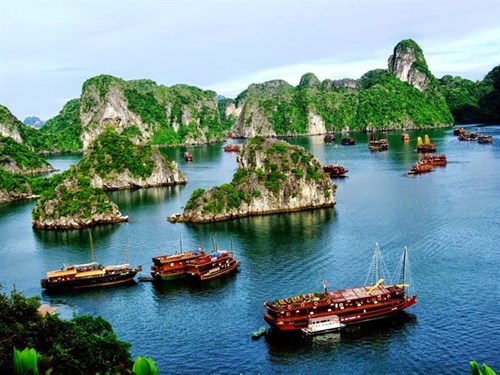Vo Van Thanh of the Southern Institute of Social Sciences (SISS), said thanks to tourism, protection, conservation and restoration of world heritage sites were improved.
"In Vietnam, heritage tourism activities have contributed to introducing the country’s World Heritage sites,” he said.
    |
 |
|
A corner of Ha Long Bay. (Photo for illustration) |
The conference, which discussed the opportunities and challenges for cultural heritage values, was organiz; ed by the HCM City University of Culture in collaboration with SISS, the HCM City Institute for Development Issues, and the International Centre for the Study of the Preservation and Restoration of Cultural Property (ICCROM).
More than 300 cultural experts and researchers from Vietnam and abroad took part in the event.
Preservation of heritage sites has helped create jobs and improved living standards in local communities, Thanh said.
Last year, heritage sites brought a high level of visitors and revenue from ticket sales and tourism services, according to the Ministry of Culture, Sports and Tourism’s Cultural Heritage Department.
Ha Long Bay in Quang Ninh province, for example, welcomed 6.93 million visitors last year, including 2.9 million foreigners, a year-on-year increase of 12.9 million.
Its tourism revenue reached nearly VND 10.8 trillion (USD 463 million), a rise of 39 percent compared to 2016.
The Hue Citadel welcomed 3 million visitors, including 1.8 million foreigners, earning VND 320 billion (USD 13.7 million) from entrance ticket sales, a four-time increase compared to 2011.
Nguyen Thi Thu Trang of the cultural heritage department said, “Tourism is considered a motivating factor to protect cultural and natural heritage sites. It is one of the most effective means for cultural exchange between Vietnam and the world.”
Vietnam has eight UNESCO-recognized World Heritage sites and eight UNESCO-recognized world biosphere reserves.
The World Heritage sites are Hue Imperial Citadel, Ha Long Bay, Hoi An Ancient Town, My Son Sanctuary, Phong Nha – Ke Bang National Park, Thang Long Imperial Citadel complex, and Ho Dynasty Citadel.
The biosphere reserves are the Can Gio Mangrove Forest in HCM City, Nam Cat Tien National Park in Dong Nai and Lam Dong provinces, Cat Ba Archipelago in Hai Phong city, Hong (Red) River Delta, Kien Giang biosphere reserve in the Mekong Delta, Cu Lao Cham in Hoi An, Western Nghe An, and Ca Mau Cape in the Southernmost province of Ca Mau.
Source: VNA